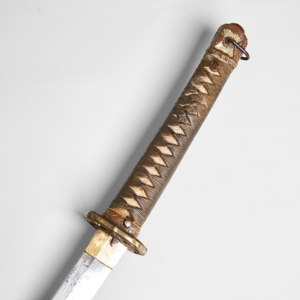The Arisaka Rifle: A Symbol of Japanese Tenacity in the Jungles of Papua New Guinea
The Type 99 Arisaka rifle, synonymous with the Imperial Japanese Army during World War II, became a ubiquitous sight amidst the dense jungles and rugged terrain of Papua New Guinea. This bolt-action rifle, chambered in 7.7x58mm Arisaka, was the standard infantry weapon for Japanese soldiers. This particular rifle, now deactivated in compliance with Western Australian legislation, carries a unique history as a captured relic from the battlefields of Papua New Guinea, brought back by a Western Australian soldier.
In the sweltering heat and humidity of New Guinea, the Arisaka proved to be a reliable and robust weapon, capable of withstanding the harsh conditions of jungle warfare.
Overview
- Good accuracy and range: The relatively long barrel proved crucial in engagements where visibility was often limited by dense foliage.
- Sturdy construction and simple design: Made it easy to maintain in the field, a vital attribute given the logistical challenges faced by Japanese forces.
- Effective in the hands of skilled marksmen: Enabled the Japanese to inflict heavy casualties on Australian forces, particularly in the early stages of the Kokoda Track campaign.
- Distinctive sharp crack: The report of the Arisaka became a chilling sound for Allied soldiers, signaling the presence of a determined and well-armed enemy.
Limitations of the Bolt-Action Mechanism
As the tide of the war turned, the Arisaka’s limitations became apparent:
- Slower than semi-automatic rifles: Used by Allied forces.
- Length and weight: Made it cumbersome in close-quarters combat, a common occurrence in the dense jungles of New Guinea.
A Silent Witness to Sacrifice and Suffering
Today, this Arisaka rifle stands as a historical artifact, a silent witness to the sacrifices and suffering endured by those who fought in the jungles of Papua New Guinea. Its presence in collections serves as a reminder of the brutal conflict and the enduring impact of war on individuals and nations. This particular rifle, captured by a Western Australian soldier, serves as a tangible link to the personal stories of those who fought in this theater of war.

















